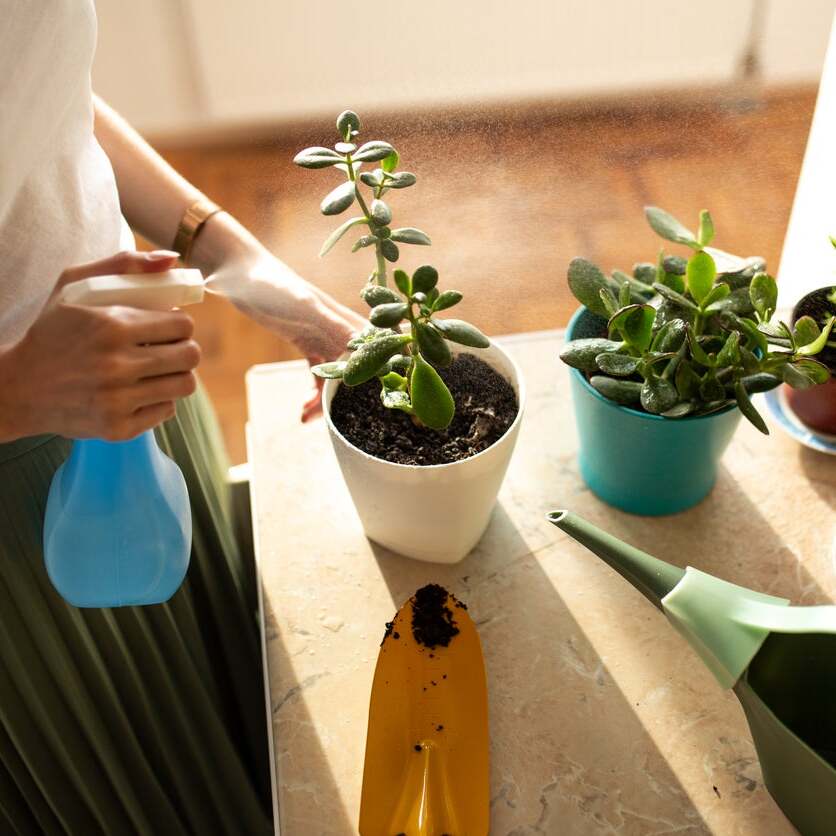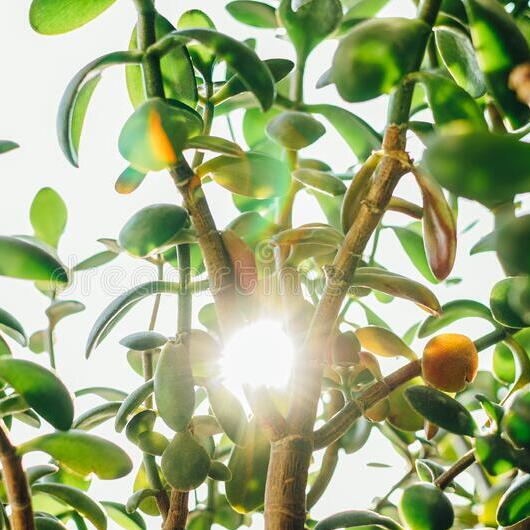Jade Plant does have other names such as Money Vine, Dollar Plant, Fortunate Plant, and Friendship Flower. Thanks to its tremendous success as a houseplant, you will have one of those in your home. And, if you’re not developing it indoors already, here you will be reading the Jade Plant benefits in this post.
The jade plant is another low-maintenance, perennial shrub with delicate pink or white flowers that develop in the summer. It is a popular, topical ointment used to cure warts, fatigue, corn and diarrhoea.
Jade Plant Benefits to Home Environment
Here are so many jade plant benefits which make your home’s indoor air neat and clean. These small and tiny hanging succulents give several benefits to your home environment as follows:
1. Improves Indoor Air Quality
In some previous research, scientists have found that indoor air can be just as contaminated and dangerous as outdoor air. It may also escalate to “Sick Building Syndrome,” some of the signs involve asthma, dizziness, fatigue, nausea, and loss of focus. Whereas natural ventilation is the only approach to avoid this, the addition of air-filtering houseplants such as snake plants, golden pothos, spider plants, dracaena, aloe vera, and jade plants often functions here.

2. Increases indoor Humidity

Relatively low moisture indoor air can impact your safety and appearance. Soft eyes, brittle hair, itchy neck, static energy, cold and fever, and asthma are some of the indications. Infectious microbes and viruses may even live in dry soil for an extended period. Humidifiers are the primary tool to improve indoor moisture; even houseplants also contribute – Pothos, Peace Lily, Spider Plant, Jade Plant increase humidity and Philodendron are better suited for this function.
3. Absorbs CO2 at Night
The jade plant as well as several other arid area species of plants, such as the Mother-in-Law Tongue, adopt the unusual carbon fixation Metabolism. It allows them the power to consume CO2 at night. It’s one of the very few plants you can plant inside to increase the quality of the air in nighttime times.

4. Increase the Beauty of Home

The Jade plant adds a touch of beauty, and looks beautiful with shiny, oblong or circular leaves, sparkling in a dark shade of black. It suits every sort of home interior due because of its flappy appearance, which resembles a small tree. The sleek design recommends it a great for dining tables and office seats. If that wasn’t enough, here you’ll also notice a pretty pink and white flowering during late winter and early spring.
5. Brings Luck to home
The Jade plant is assumed to promote growth and prestige in Asian countries. It’s a sign of good luck and stability in Astrology since it’s an evergreen herb. It’s the ideal plant for one’s homes and offices. Even, a jade plant may be a perfect wedding gift and a lovely home decoration.
Also read:
Caring Benefits of Jade Plant:
Maintenance and care for jade plants are so easy which make our life easier and give freedom of some other task rather than keep caring of plants. Here are some other caring benefits of Jade Plants
1. Easy to Maintain
If you like a plant that leaves you away from maintenance, then purchase a jade plant. If you can save this from low temperatures and cold winds in the winter and stop excessive water loss, it will continue to develop for years to come. Because it’s slow-growing, and you won’t need regular repotting, coppicing, and fertilization as well.

2. Need Less Water

Water: do not even water the jade plant on fix time. Instead, water the jade plant once the surface of its soil is hard to the fingertips. Be careful and do not overwater your jade plant; otherwise, succulent leaves will become yellow and begin to rot. If the jade plant drops leave and have leaf stains, this is most usually induced by even less watering.
3. Moderate Sunlight
The amount of sun they get is an essential part of their care and protection of jade plants. To grow it correctly, they need direct sunlight. They have to be left at least once a week in direct sunlight for their healthy development. While Jade plants require direct sun, they can also accept light shade and dappled light to develop well.

Follow us on Instagram: @Greenkoshh
Also read: Fishbone Cactus: All About This Easy To Care Zig-zag Houseplant
Medicinal Usages of Jade Plant:
The following benefits are:
- Extract of their leaves is used to treat burns, stomach pain, warts, and diabetes.
- Jade plant extract is also added to the cure skin warts for overnight across three days.
- Conventional medicine relates to the Jade plant as a treatment for diabetes.
- Consuming drink made with Jade leaves tends to ease the effects of diabetes.
- As with Astrology, a Jade plant enables to open up the energy stream in the body. It increases and stimulates ‘Chi,’ inspirational, and positive vibrations.
Also, Jade plants have various usages in various countries as follows.
1. Treatment for Nausea
In certain areas, this plant is often used as a treatment for nausea, and in China, several jade plants with pointed leaves, named as Stone Lotus, are also used to relieve diabetic symptoms.
2. In Africa, it is used to treat epilepsy, diarrhoea, corns, and to purge the intestines
Jade indoor plant is also used as a remedy for vomiting and is used in Africa for the diagnosis of epilepsy, maize, diarrhoea and intestinal purification.
3. In China, Used to Treat Diabetic Symptoms
Two clinical trials were performed to evaluate the ability of rock lotus. The outcome of the analysis showed that pills made of rock lotus extract effectively improved blood sugar levels and reduced diabetic symptoms in the patients studied.
Related Article: Jade Plant vs Elephant Bush
FAQs
Q1: Is the Jade Plant Poisonous to Dogs?
While the jade plant appears safe; a dog can deadly eat it. A dog who has consumed the leaves of a jade plant could have fatigue, nausea, vomiting and loss of coordination. If your pup has either of these symptoms, call the doctor urgently.
Q2: Can I put my Jade Plant outside?
Growing jade plant outside. You should transfer your Jade plant out for summers, just don’t place it in the intense light, otherwise, the leaves would roast. It’s definitely going to require water to travel more frequently than when it was indoors.
Q3: Should you mist a Jade Plant?
If you stay in a moister area, you might need water once a day or less. If you think that getting more humidity is acceptable for your jade plant, I recommend fogging the leaves throughout the mornings so that they could still be dry out before cool evenings.

